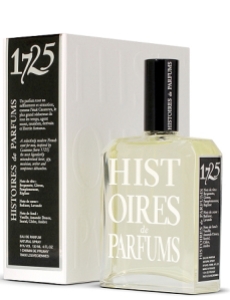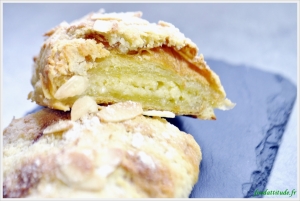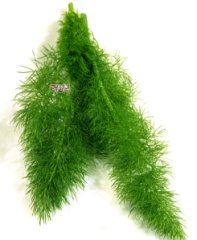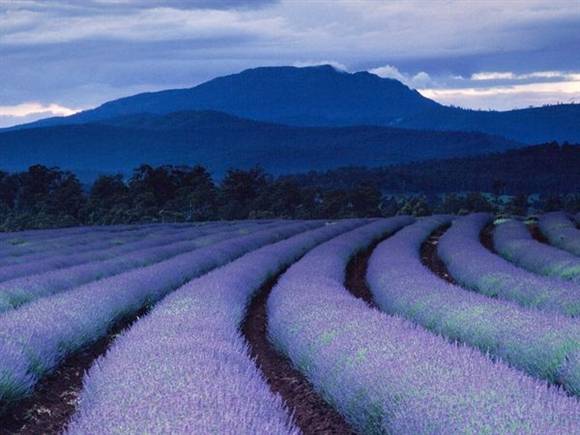Foin Fraîchement Coupé is a limited edition fragrance from the ancient house of Oriza L. Legrand (hereinafter just “Oriza“). It is a very classical, traditional scent that represents not only Oriza’s ancient roots, but also one of the oldest genres of perfumery: the aromatic fougère. In fact, the fragrance was originally released almost 150 years ago, and its full name is Foin Fraîchement Coupé 1866 (hereinafter just “Foin Fraichement“) to reflect the year of its debut. Yet, this is no powdery, dusty scent taken out of a museum; Foin Fraichement has been re-tweaked for the modern era by Hugo Lambert, the nose behind the new Oriza fragrances and one of the brand’s two co-owners.
The new Foin Fraichement is an eau de parfum that was released in 2013. On its website, Oriza describes Foin Fraichement and its notes as follows:
1886
New-Mown-Hay“When you walk in the evening, breathing the smell of new-mown hay, listening to the cuckoo in the woods, watching the stars that spin, your heart, indeed, your heart is purer, more penetrated with air, light, and the peaceful azure horizon, where the earth touches the sky in a quiet kiss. Oh! like the perfume in the air of a women’s hair! like the skin of their soft hands, as their eyes stare at us and penetrate our soul!” Gustave Flaubert
Top Notes: Angelique, Star Anise & Wild Mint.
Heart Notes: Clover, Sainfoin, New-Mown-Hay & Clary Sage.
Base Notes: Hay , White Musk, cockle & Ivy.
Foin Fraichement opens on my skin as a strongly green, aromatic cologne with green mint, green angelique, sweet grass, and slightly pungent, dried herbs. The bouquet is heavily infused with clary sage which manifests the plant’s soapy herbaceousness, as well as its lavender facets. The very cologne-like vibe is further underscored by clean musk and a lemony aroma. I don’t know where the latter comes from, but the two together add a clean freshness to go along with the very crisp, bright, green bouquet.
Minutes later, the star anise arrives, adding a strong spiciness to the notes. It competes with the lavendery clary sage, and the minty herbal accords for dominance, and somewhat overpowers the more delicate grass tonalities on my skin. The overall effect of the aromatic, spicy, herbal, soapy clean, and slightly lemony notes is a scent that is not only very classic in feel, but rather like a vintage barber-shop fragrance.
In fact, there are times when Foin Fraichement’s opening bouquet rather resembles Old Spice on my skin. The latter was released in 1937/1938, while the Oriza scent launched about 90 years before, but there are definite similarities. One reason why is the two fragrances have an overlap in notes: star anise, clary sage, lemon, musk, and soapiness. Old Spice is soapier (thanks to the inclusion of aldehydes), has other pungent spices like nutmeg and pimento, and far fewer green notes, but the two fragrances have a definite kinship and similar vibe. The difference for me is that Foin Fraichement feels much more refined, deep, and expensive.
More importantly, though, the similarities don’t last very long. 20 minutes in, small touches of sweetness and hay rise up from the base, softening some of Foin Fraichement’s aromatic crispness. The perfume is now a very spicy, lightly sweetened blend of star anise, citric freshness, and herbal greenness, all lightly dusted with fresh hay. At the 40-minute mark, Foin Fraichement changes further as its base turns creamy, almost as if some soft woods were included. The clary sage’s soapiness recedes a little, as well.
For the first two hours, many of these changes are one of degree. During that time, Foin Fraichement is a very simple fragrance whose core essence remains unchanged. There are tiny fluctuations in the nature or feel of some of the secondary elements, but, by and large, Foin Fraichement is a very classical aromatic green fragrance in the fougère category with spicy, herbal, green, clean, and hay notes. (If you’re interested, you can read more about the aromatic green subcategory for fougères on Fragrantica.)
Foin Fraichement’s opening bouquet is quite airy and light, but also strong. 2 small sprays created quite a concentrated fragrance that initially hovered 3 inches in projection. Both the sillage and the perfume’s strength slowly soften, however, especially once the creamy base puts an end to the Foin Fraichement’s soapiness. It also helps to diffuse the musk and some of the fragrance’s herbal greenness. At the end of the 2nd hour, Foin Fraichement hovers maybe half an inch above my skin.
The biggest and most noticeable change on my skin is that creaminess to which I keep referring. At times, it feels almost vanillic at times; on other occasions, it is like coumarin and creamy hay. It is thoroughly intertwined with Foin Fraichement’s green side which increasingly takes on vetiver-like tonalities in its grassiness. The mint has faded away, but a faintly powdery touch takes its place. The whole thing is infused with star anise’s spicy sharpness, as well as a delicate sweetness. At the start of the third hour, Foin Fraichement’s main bouquet is of star anise spiciness with green vetiver-like notes, a lingering touch of aromatic herbaceouness, and clean, fresh musk, all atop a creamy coumarin and hay base. It no longer bears any resemblance to Old Spice.
Foin Fraichement’s drydown stage begins at the start of the 4th hour, and consists primarily of beautiful creaminess with star anise spiciness. There is a flicker of greenness that feels like vetiver, but only light touches of aromatic clary sage and musk remain. Taking their place is what I’d swear was a hefty amount of coumarin. As Fragrantica explains, coumarin consists of:
crystals found in tonka beans and other plants, smelling of almonds, vanilla and freshly-mown hay; found in both fragrances and flavorings, extremely versatile and popular, basis of the fougere family of scents.
Here, the aroma resembles tonka vanilla, with only infrequent, light undertones of sweet hay. The whole spicy, creamy bouquet is lightly dusted by a tiny amount of powder, but it is generally the sweetened variety, thereby underscoring the coumarin-tonka angle even further.
Foin Fraichement turns into a skin scent on me at the 3.5 hour mark, but the perfume lingers on for a while. In its final moments, Foin Fraichement is a blur of creaminess with a touch of something dry and spicy. All in all, it lasted 7.25 hours on me with 2 sprays.
Foin Fraichement isn’t a complicated or edgy scent, but then, it’s not meant to be. Fragrances in 1866 weren’t the twisting, morphing creatures that they are today, so one can’t blame Foin Fraichement for its simplicity. Plus, the aromatic fougère category is perhaps the most traditional category of perfumery around. Foin Fraichement comes with those limitations, but it feels like a very refined take on the crisp, green, herbal aromatic genre. It’s also somewhat modern and not wholly vintage in character, as it lacks heavy soapiness or powderiness. In other words, if Foin Fraichement has a retro call-back to the past, it is due primarily to its very traditional genre. Everyone from Guerlain to Profumum Roma makes aromatic fougères, so Foin Fraichement is not old-fashioned so much as classical in nature.
For my personal tastes and style, the fragrance is a little too cologne-like at its start (and you know my personal issues with soapy cleanness), but I found the drydown to be lovely. The mix of star anise and creaminess was wonderful, and so smooth, too. My only real quibble with the fragrance is a small one regarding its moderate longevity, but that may be a question of personal skin chemistry. Foin Fraichement certainly lasted longer on my skin than some of the other scents from the Oriza line.
As a whole, I think Foin Fraichement is a very easy, approachable, good quality, and versatile fragrance. However, it skews into the masculine territory at its start, and I don’t know if some women will find it truly unisex in nature. I suspect it will depend largely on how they feel about herbaceous or aromatic notes like mint, clary sage, and/or lavender, especially all together and in conjunction with star anise.
Foin Fraichement is available on Oriza’s website, and costs €90 for a 100 ml bottle, which is less than the €120 for most of its other siblings. It is also sold at a variety of European retailers, and at a New York boutique called Juju Amuse (see the details section below). Even better, Luckyscent in L.A. just start carrying the full Oriza L. Legrand line (including the lovely soaps and candles) today. It sells Foin Fraichement for $125.
All in all, if you’re looking for a very fresh, spicy aromatic fougère with a refined classicism, you should give Foin Fraichement Coupé a sniff.
Disclosure: Sample courtesy of Oriza L. Legrand. That did not influence this review, I do not do paid reviews, and my opinions are my own.


















